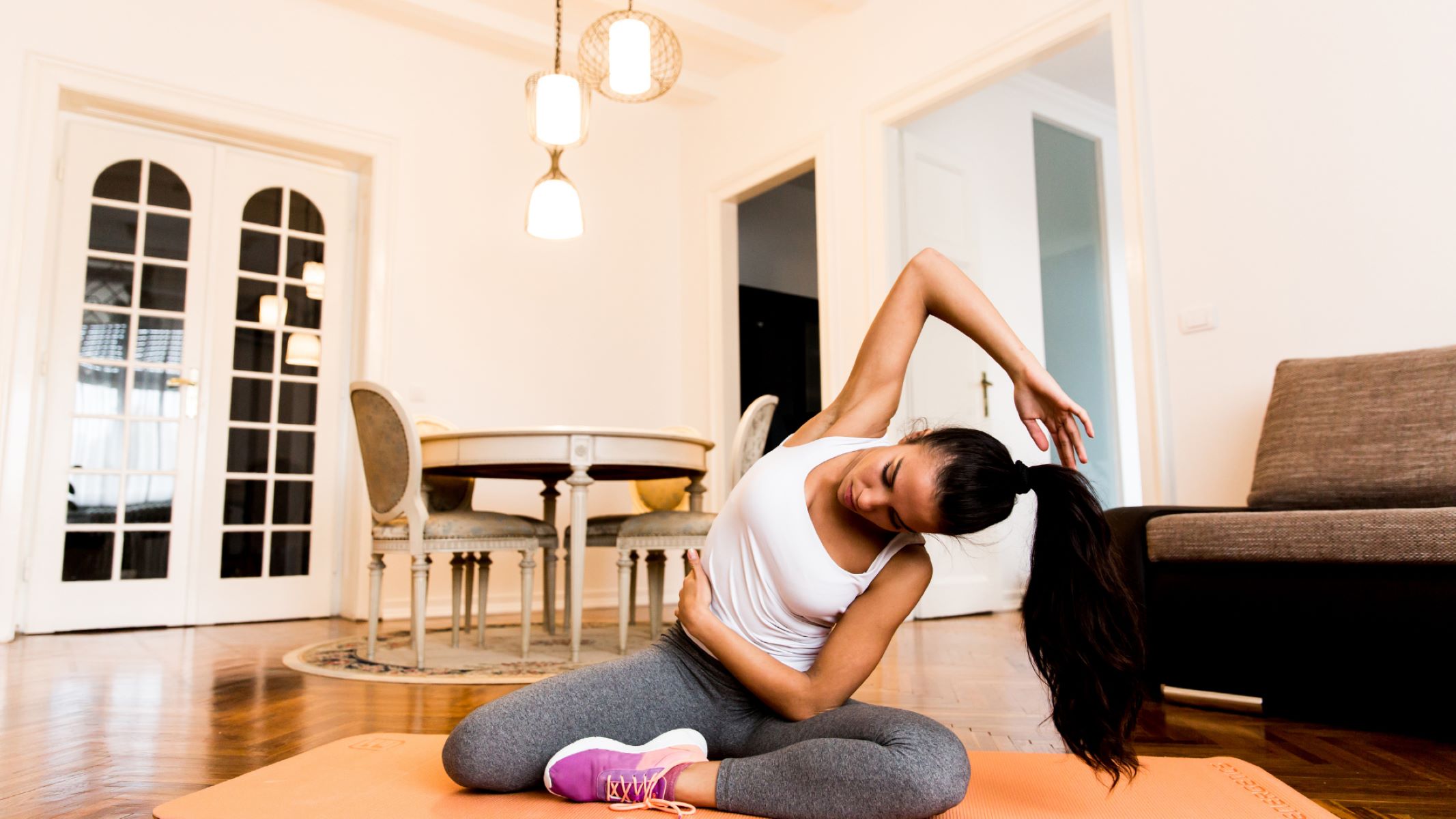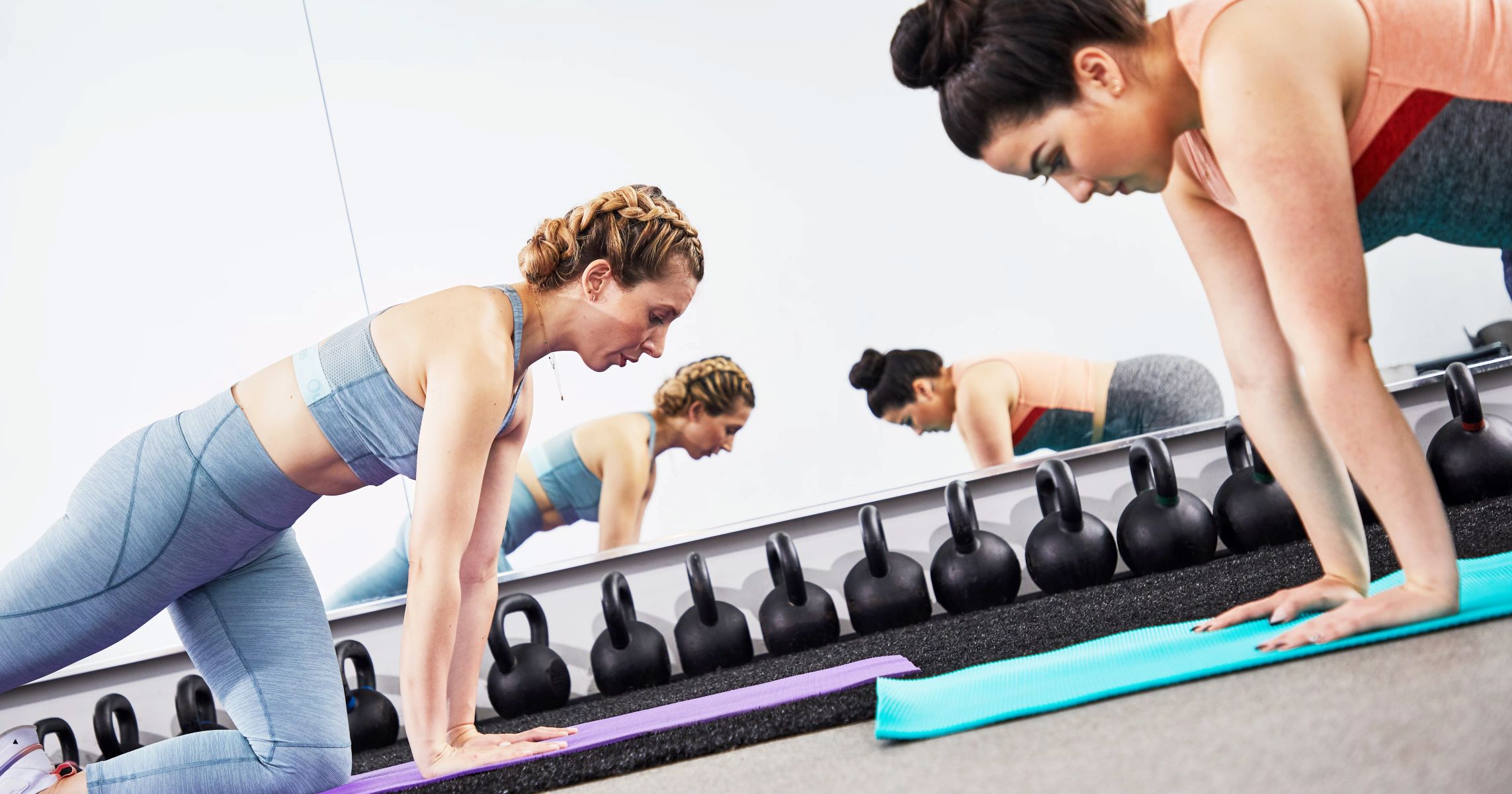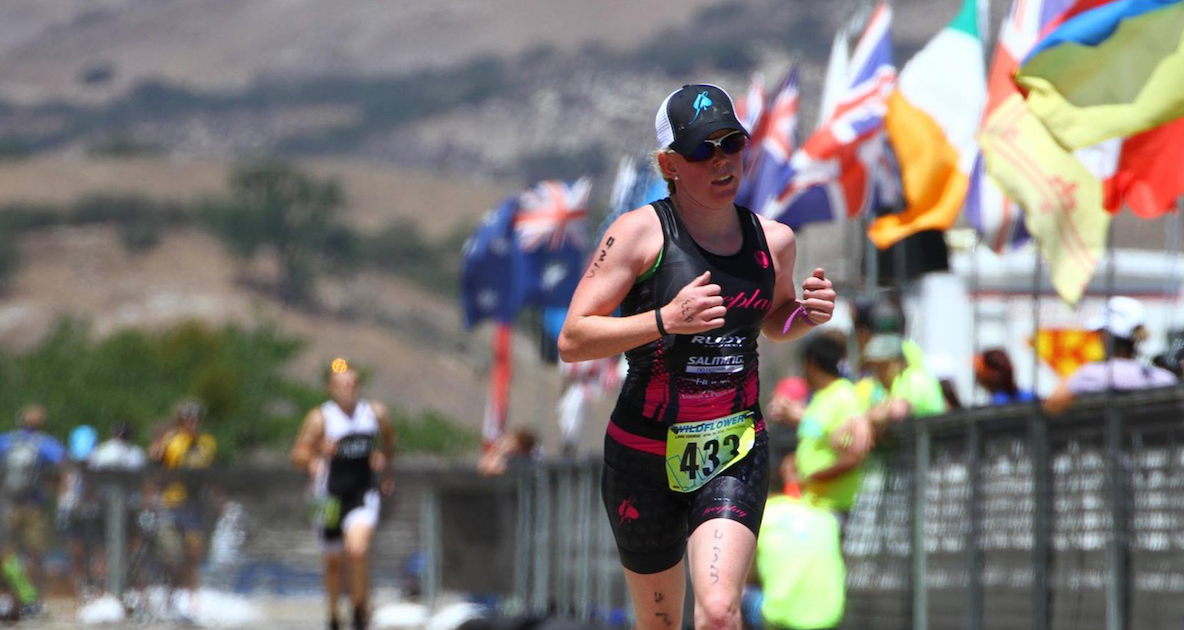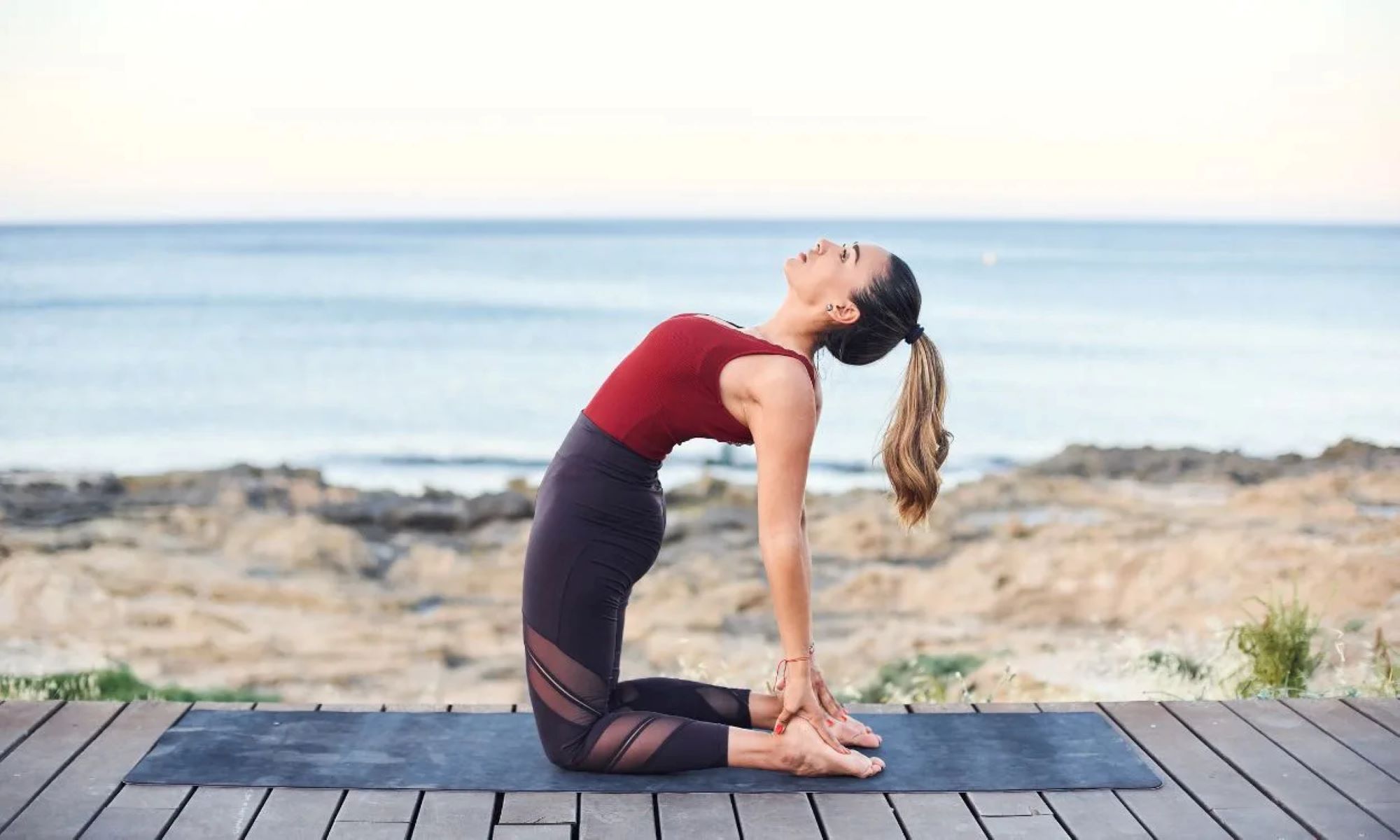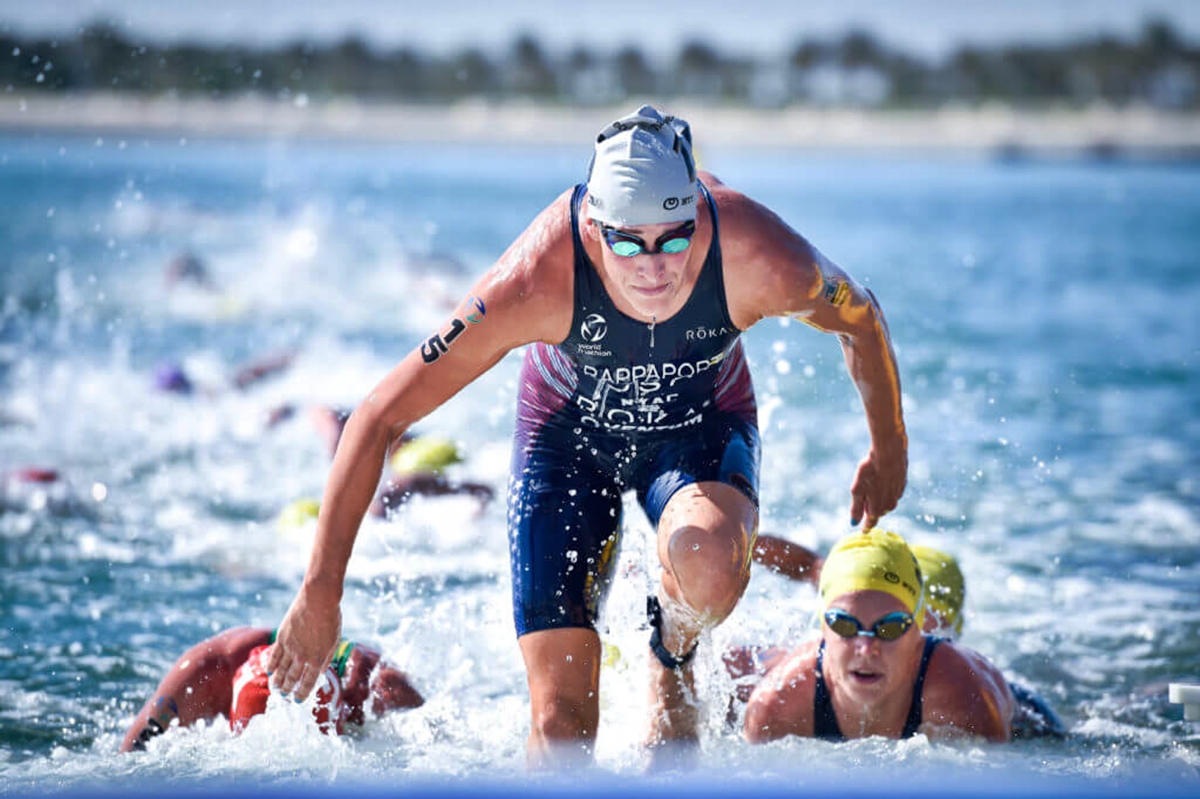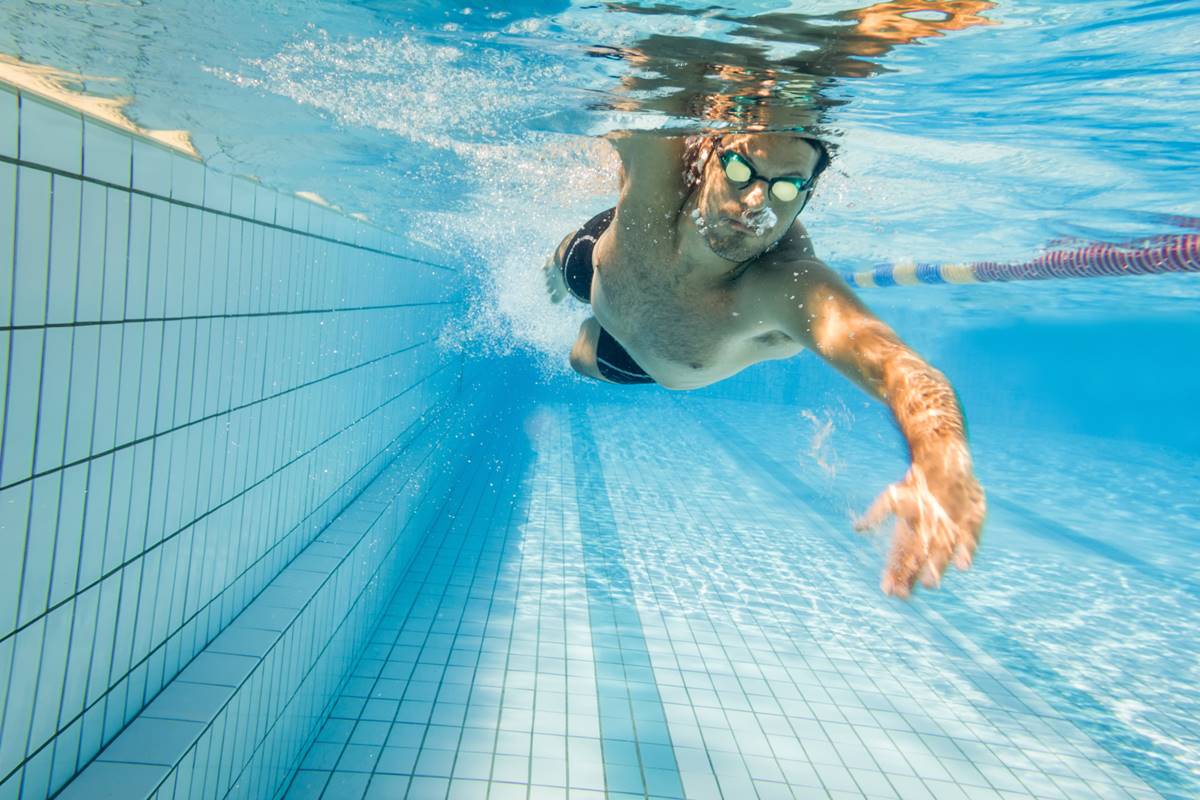

Featured
How To Swim For Exercise
Published: October 2, 2023
Looking to stay fit and active? Learn how to swim for exercise and unlock the benefits of this low-impact, full-body workout. Dive into our featured guide now!
Introduction
Swimming is not only a refreshing activity on a hot summer day, but it also offers a multitude of health benefits. Whether you’re a beginner or an experienced swimmer, incorporating swimming into your exercise routine can provide a full-body workout while being easy on the joints.
From cardiovascular fitness to muscular strength and endurance, swimming is a low-impact exercise that can help improve your overall fitness level. Additionally, swimming is a great way to relieve stress and improve mental well-being.
In this article, we will explore the various benefits of swimming for exercise, provide tips on choosing a swimming facility, discuss basic swimming techniques, and offer swimming workouts for beginners, intermediate swimmers, and advanced swimmers. We will also delve into incorporating equipment into your swimming routine, share safety tips, and ultimately inspire you to dive into the world of swimming for exercise.
So grab your swimsuit, goggles, and towel, and let’s jump right in!
Benefits of Swimming for Exercise
Swimming is a fantastic form of exercise that offers a wide range of benefits for both your physical and mental well-being. Here are some of the key advantages of incorporating swimming into your exercise routine:
1. Full-Body Workout: Swimming engages multiple muscle groups, providing a complete body workout. It targets the arms, shoulders, back, core, and legs, helping to build strength, tone muscles, and improve overall body composition.
2. Low-Impact Exercise: Unlike many other forms of exercise, swimming is low-impact, meaning it puts less stress on your joints and reduces the risk of injury. This makes it an ideal activity for people with joint pain, arthritis, or those recovering from injuries.
3. Cardiovascular Fitness: Swimming is an excellent way to improve cardiovascular health. It elevates the heart rate, increases lung capacity, and improves circulation, all of which contribute to a healthier heart and a reduced risk of cardiovascular diseases.
4. Weight Management: Swimming is a calorie-burning exercise that can aid in weight loss and weight management. It burns a significant number of calories while simultaneously boosting metabolism, making it an effective tool for maintaining a healthy weight.
5. Stress Relief: Swimming provides a calming and meditative experience, helping to reduce stress levels and improve mental well-being. The rhythmic movements and the sensation of being in water have a soothing effect on the mind, making swimming a great way to unwind and relax.
6. Improved Flexibility: Regular swimming can enhance flexibility and range of motion. The resistance of the water promotes elongation of the muscles, improving flexibility over time and reducing the risk of injuries related to muscle tightness.
7. Rehabilitation and Cross-Training: Swimming is often used as a form of rehabilitation for individuals with injuries or chronic conditions. It allows for gentle movement and strengthening without placing excessive strain on the body. Additionally, swimming can serve as an excellent cross-training activity for athletes to diversify their training regimen and prevent overuse injuries.
8. Social Engagement: Whether you swim solo or join a swimming club, swimming provides an opportunity for social interaction and building connections. Sharing the pool with others who have a similar interest can create a sense of community and help you stay motivated on your fitness journey.
These are just a few of the many benefits of swimming for exercise. Whether you’re a beginner or an advanced swimmer, diving into the pool regularly can have a profound impact on your overall health and well-being.
Choosing a Swimming Facility
When it comes to swimming for exercise, choosing the right swimming facility is essential. Here are some factors to consider when selecting a swimming facility that suits your needs:
1. Location: Look for a swimming facility that is conveniently located, either near your home or workplace. This will make it easier to incorporate swimming into your daily routine without spending too much time commuting.
2. Pool Size and Availability: Consider the size and availability of the pool. If you prefer a less crowded environment, opt for a facility that offers dedicated lap swimming lanes. Additionally, ensure that the facility has open swim hours that align with your schedule.
3. Cleanliness and Maintenance: Cleanliness is crucial when it comes to swimming facilities. Look for a facility that maintains proper hygiene standards, including regular pool cleaning and water quality checks. A well-maintained facility will ensure a safe and enjoyable swimming experience.
4. Facilities and Amenities: Evaluate the additional facilities and amenities offered by the swimming facility. This may include locker rooms, showers, sauna, steam room, and on-site equipment such as kickboards and pull buoys. These amenities can enhance your overall swimming experience.
5. Qualified Staff: It’s essential to swim in a facility that employs qualified lifeguards and swimming instructors. Trained staff members can ensure your safety and provide guidance if you are a beginner or looking to improve your swimming technique.
6. Membership Options and Costs: Consider the membership options and costs associated with the swimming facility. Some facilities offer monthly or annual memberships, while others may have pay-per-use options. Choose a membership that fits your budget and frequency of swimming.
7. Additional Programs and Classes: If you’re interested in expanding your swimming skills, look for a facility that offers additional programs and classes. This may include swimming lessons for beginners, advanced training sessions, aqua aerobics, or water therapy programs.
8. Customer Reviews and Reputation: Take the time to read customer reviews and assess the facility’s reputation. This will give you insights into the quality of service, cleanliness, and overall experience provided by the swimming facility.
By considering these factors, you can choose a swimming facility that aligns with your preferences and needs. Remember, finding a facility that you feel comfortable and motivated in will significantly enhance your swimming journey and help you achieve your fitness goals.
Basic Swimming Techniques
Learning and practicing proper swimming techniques is essential for both safety and efficiency in the water. Here are some basic swimming techniques to help you get started:
1. Freestyle (Front Crawl): Freestyle is the most popular and efficient swimming stroke. Start by positioning your body face down in the water, with one arm extended forward and the other arm back near your hip. Kick your legs in a fluttering motion, while alternating your arms in a continuous motion, pulling the water towards you with each stroke.
2. Backstroke: The backstroke is performed on your back, with your face upward and your arms alternating in a windmill motion. Keep your body aligned and kick your legs in an up-and-down flutter kick. This stroke allows you to breathe easily as your face remains out of the water.
3. Breaststroke: The breaststroke is a slower stroke that focuses on simultaneous arm and leg movement, creating a circular motion. Start with your arms extended forward and bring them back around while simultaneously kicking your legs in a frog-like motion. Take a breath after every stroke by lifting your head out of the water.
4. Butterfly: The butterfly stroke is a challenging yet powerful swimming technique. It involves an undulating body motion, dolphin kick, and simultaneous arm movement. Begin with both arms extended in front of you and then pull them back while kicking your legs in a powerful wave-like motion. This stroke requires coordination and core strength.
5. Treading Water: Treading water is a crucial skill that allows you to stay afloat and conserve energy in deep water. It involves moving your arms and legs in small circular motions while keeping your body in an upright position. Practice controlled breathing and small movements to maintain stability in the water.
6. Bilateral Breathing: When swimming, it is beneficial to practice bilateral breathing, which means breathing on both sides. This helps to maintain balance and symmetry in your stroke and can improve your overall swimming efficiency.
7. Streamline Position: The streamline position is important for reducing water resistance and increasing speed. To achieve this position, extend your arms above your head, press your biceps against your ears, and stretch your body as much as possible. Keep your legs straight and close together to minimize drag.
Remember, mastering these basic swimming techniques takes time and practice. It is advisable to learn from a qualified swimming instructor who can provide expert guidance and help you refine your technique.
Warm-Up Exercises
Just like any other form of exercise, it’s crucial to warm up your body before diving into a swimming session. A proper warm-up routine helps prepare your muscles and joints for the demands of swimming and reduces the risk of injury. Here are some effective warm-up exercises to incorporate into your swimming routine:
1. Arm Circles: Stand with your feet shoulder-width apart and extend your arms out to the sides. Make small circles with your arms, gradually increasing the size of the circles. Repeat for 15-20 seconds and then reverse the direction of the circles.
2. Shoulder Rolls: Stand tall with your feet hip-width apart. Roll your shoulders forward in a circular motion, gradually increasing the size of the rolls. After 15-20 seconds, reverse the direction and roll your shoulders backward for another 15-20 seconds.
3. Neck Stretches: Gently tilt your head to the right, bringing your right ear towards your right shoulder. Hold the stretch for 15 seconds and then repeat on the left side. Next, drop your chin towards your chest and hold for 15 seconds. Repeat the stretch, looking up towards the ceiling.
4. Torso Twists: Stand with your feet shoulder-width apart and extend your arms straight out to the sides. Rotate your upper body to the right, keeping your hips facing forward. Hold for a few seconds and then twist to the left side. Repeat this movement for 10-12 repetitions on each side.
5. Leg Swings: Stand next to a wall or support and hold onto it for balance. Swing one leg forward and backward in a controlled manner, crossing it in front of your body and then swinging it back behind you. Perform 10-12 swings on each leg.
6. Ankle Circles: Sit on the edge of a chair or bench and extend one leg in front of you. Rotate your foot in a circular motion, making small circles with your ankle. After 15 seconds, switch to the other leg and repeat the exercise.
7. Dynamic Stretches: Perform dynamic stretches such as arm swings, high knees, and butt kicks to activate your muscles and increase your heart rate. These exercises help to improve blood flow and loosen up your body before swimming.
Remember to perform these warm-up exercises in a controlled manner and within your range of motion. Gradually increase the intensity and duration of the exercises as your body becomes more warmed up. Taking a few minutes to properly warm up your body will optimize your swimming performance and help prevent muscle strains and injuries.
Swimming Workouts for Beginners
If you’re new to swimming or looking to start a swimming routine, it’s important to begin with workouts that cater to your fitness level and gradually increase the intensity. Here are some swimming workouts designed specifically for beginners:
1. Kickboard Workout: Start by using a kickboard, holding it with both hands extended in front of you. Kick your legs in a flutter kick motion while keeping your body in a horizontal position. Aim to complete 4-6 laps of the pool, focusing on maintaining a steady and controlled kick throughout.
2. Freestyle Interval Swim: Warm up by swimming easy laps using the freestyle stroke. Once warmed up, perform a series of interval swims. Swim one lap at a comfortable pace, rest for 30 seconds, and then swim another lap at a slightly faster pace. Repeat this pattern for a total of 8-10 laps.
3. Mix Stroke Swim: Practice different swimming strokes to work on your technique and build endurance. Start by swimming a lap of freestyle, followed by a lap of backstroke, breaststroke, and butterfly. Repeat this sequence for 4-6 laps, gradually increasing the distance as you progress.
4. Pyramid Swim: Begin with swimming one lap of freestyle, then take a short rest. Swim two laps of freestyle, followed by a rest. Continue increasing the number of laps with each set until you peak at four laps and then gradually decrease back down to one lap. Rest for 30 seconds between each set.
5. Pull Buoy and Paddle Workout: Use a pull buoy between your thighs and swim laps using only your arms. This workout helps to strengthen your upper body. Start with 4-6 laps of freestyle using the pull buoy. Next, incorporate hand paddles to increase resistance and swim an additional 4-6 laps. Rest briefly between each set.
Remember to focus on maintaining proper form and breathing while swimming. Take breaks as needed and listen to your body. As you progress, gradually increase the distance and intensity of your workouts. It’s important to challenge yourself, but not to the point of exhaustion or muscle strain.
Swimming is a versatile exercise that can be customized to your fitness level. Don’t be afraid to experiment with different workouts and strokes to keep your routine interesting and engaging. And most importantly, have fun while you swim and enjoy the many benefits it brings to your overall health and fitness.
Intermediate and Advanced Swimming Workouts
If you have progressed beyond the beginner level in swimming and are looking to challenge yourself further, incorporating intermediate and advanced swimming workouts into your routine can take your fitness to new heights. Here are some workout ideas for intermediate and advanced swimmers:
1. Interval Training: This workout involves alternating between high-intensity and low-intensity swimming intervals. Swim a predetermined distance at a fast pace, followed by a short rest interval. Repeat this pattern for several sets, gradually increasing the distance or decreasing the rest time as you advance.
2. Pyramid Set: Start with a short swim distance, such as 50 meters, and gradually increase the distance with each set, reaching a peak distance, and then reducing the distance in the same pattern. For example, swim 50 meters, rest, swim 100 meters, rest, swim 150 meters, and so on, before decreasing the distance back down to 50 meters.
3. Swim Drills: Incorporate swim drills into your workouts to improve stroke technique and efficiency. Examples of drills include catch-up drill, fingertip drag, and single-arm drills. Dedicate a portion of your workout to drills to focus on specific aspects of your stroke and refine your technique.
4. Endurance Swim: This workout focuses on building endurance and stamina. Swim a continuous distance, such as 1,000 meters or more, without stopping. Start with a distance that challenges you but is achievable, and gradually increase the distance as you build your endurance over time.
5. Sprint Sets: Incorporate sprint sets into your workout to improve speed and power. Swim shorter distances, such as 25 or 50 meters, at maximum effort, followed by a brief rest period. Repeat this pattern for several sets, aiming to maintain a fast pace throughout each sprint.
6. Individual Medley (IM) Workout: IM workouts involve swimming all four competitive strokes—butterfly, backstroke, breaststroke, and freestyle—in one sequence. Swim predetermined distances for each stroke, such as 100 meters for each stroke, or mix it up with varying distances. This workout challenges your overall swimming versatility and endurance.
7. Open Water Simulation: If you have access to open water or are training for an open water race, incorporate open water simulation workouts into your routine. Swim in natural bodies of water and practice skills such as navigation, sighting, and adapting to the unpredictable conditions of open water.
Remember to always warm up before engaging in these intermediate and advanced workouts and to cool down and stretch afterward. It’s important to listen to your body and adjust the intensity and duration of your workouts based on your fitness level and abilities.
As you continue to challenge yourself with these workouts, consider seeking guidance from a qualified swimming coach or trainer to ensure proper form and technique. Push yourself, set goals, and enjoy the sense of accomplishment as you advance in your swimming journey.
Incorporating Equipment into Your Swimming Routine
Adding swimming equipment to your routine can enhance your swimming experience and help you achieve specific fitness goals. Various equipment options are available to improve technique, increase resistance, and target specific muscle groups. Here are some commonly used swimming equipment and how to incorporate them into your swimming routine:
1. Kickboard: A kickboard is a buoyant foam board that you hold onto while kicking your legs. It helps isolate and strengthen the muscles in your lower body. Incorporate kickboard sets into your workouts by using it for specific distances, such as swimming with the kickboard for 4-6 laps as part of your warm-up or cool-down routine.
2. Pull Buoy: A pull buoy is a floatation device that you squeeze between your thighs to keep your legs afloat. It allows you to focus on upper body strength and technique. Use the pull buoy during sets that emphasize arm strokes, such as swimming freestyle or doing pull sets. This isolates the arms and core muscles while minimizing leg movement.
3. Paddles: Hand paddles are flat, plastic devices that you wear on your hands to increase resistance and strength in the water. They can help improve your pull and build upper body strength. Incorporate paddles into your workouts by wearing them during specific intervals or sets, focusing on your stroke technique and power through the water.
4. Fins: Fins are rubber or silicone devices that attach to your feet and increase propulsion through the water. They help improve leg strength and overall speed. Incorporate fins into your workouts by using them for specific drills or sets, such as doing kick sets or practicing fast intervals. Remember to choose fins that provide the right amount of resistance without causing strain.
5. Snorkel: A snorkel is a device that allows you to breathe continuously while keeping your face in the water. It can help improve body position and focus on specific aspects of your stroke technique. Use a snorkel during drills or sets that emphasize body rotation or stroke efficiency, helping you maintain a streamlined position and improve overall stroke mechanics.
6. Resistance Bands: Secure a resistance band around a stationary object near the pool, such as a ladder or pole. Then, attach the other end to your body and perform various resistance exercises in the water, such as lunges, squats, or lateral movements. This adds resistance and challenges your muscles in a different way compared to traditional swimming strokes.
7. Swim Gloves: Swim gloves are neoprene gloves that increase resistance in the water, challenging your hand and forearm muscles. Incorporate swim gloves into your swim workouts by using them during specific sets or intervals, focusing on increasing your stroke power and arm strength.
When incorporating swimming equipment into your routine, start with lower resistance and gradually increase it as your strength and proficiency improve. Always follow the manufacturer’s instructions and use equipment that is appropriate for your fitness level and goals.
Remember that equipment is meant to supplement your training and should not replace proper stroke technique and form. Consult with a swimming coach or instructor if you’re unsure about the correct usage or selection of equipment.
By incorporating swimming equipment into your routine, you can target specific muscle groups, improve your technique, and enhance overall performance in the water. Embrace the variety and versatility that this equipment offers and challenge yourself to reach new levels of swimming proficiency and fitness.
Safety Tips for Swimming
While swimming is a fun and rewarding activity, safety should always be a top priority. Whether you’re swimming in a pool, lake, or ocean, it’s important to follow these safety tips to ensure a safe and enjoyable experience:
1. Learn to Swim: Ensure that you know how to swim confidently before venturing into deep water. Learning proper swimming techniques and water safety skills through lessons or training can greatly reduce the risk of accidents.
2. Swim in Designated Areas: Stick to swimming in designated areas supervised by lifeguards, as they are trained to respond to emergencies. These areas typically have clear boundaries and are equipped with safety measures.
3. Never Swim Alone: Whenever possible, swim with a buddy. Having someone with you significantly reduces the risk of accidents and can provide immediate assistance in case of an emergency.
4. Observe and Follow the Rules: Pay attention to and follow any posted signs, rules, and instructions at the swimming facility or beach. These rules are in place to ensure everyone’s safety and should be respected.
5. Know the Water Depth: Before diving or jumping into the water, familiarize yourself with the depth. Jumping or diving into shallow water can lead to serious injuries. If the depth is uncertain, enter the water feet first.
6. Be Cautious of Changes in Water Conditions: Be aware of any changes in water conditions such as currents, tides, or weather. These factors can affect your safety and swimming ability. Avoid swimming in choppy or rough waters.
7. Practice Sun Protection: Apply waterproof sunscreen before swimming to protect your skin from harmful UV rays, even on cloudy days. Reapply as necessary and wear a wide-brimmed hat and UV-protective sunglasses.
8. Stay Hydrated: Remember to drink plenty of water, even when you’re in the water. Swimming can be physically demanding, and staying hydrated is essential for maintaining optimal performance and preventing dehydration.
9. Beware of Hypothermia: If swimming in cold water, be aware of the signs of hypothermia, such as shivering, numbness, and confusion. Exit the water if you start experiencing these symptoms and warm up immediately.
10. Watch for Signs of Fatigue: Recognize the signs of fatigue, such as muscle cramps, difficulty staying afloat, or feeling lightheaded. If you feel tired, take a break or exit the water to prevent exhaustion or potential injuries.
11. Respect Your Limits: Know your swimming abilities and stay within your comfort zone. Avoid attempting advanced swimming techniques or distances beyond your skill level, as it can increase the risk of accidents.
12. Educate Children about Water Safety: Teach children about water safety, including the importance of swimming in designated areas, wearing appropriate flotation devices, and always swimming under adult supervision.
By following these safety tips, you can minimize the risk of accidents and ensure a safe swimming experience. Stay vigilant, aware of your surroundings, and take proper precautions to make swimming a enjoyable and safe activity for you and your loved ones.
Conclusion
Swimming is a versatile and rewarding form of exercise that offers numerous benefits for both the mind and body. From a full-body workout to improved cardiovascular fitness, swimming provides a low-impact and enjoyable way to stay fit and active. By incorporating swimming into your exercise routine, you can enhance strength, endurance, and overall well-being.
Choosing the right swimming facility is crucial to ensure a comfortable and enjoyable swimming experience. Consider factors such as location, pool size, cleanliness, amenities, and qualified staff when selecting a swimming facility that meets your specific needs and preferences.
Learning and practicing proper swimming techniques is essential for safety and efficiency in the water. Whether you’re a beginner or an experienced swimmer, mastering the basic strokes like freestyle, backstroke, breaststroke, and butterfly will help you improve your swimming abilities and maximize the benefits of this exercise.
Before diving into your swimming routine, it’s important to warm up your body to prevent injuries. Incorporating warm-up exercises such as arm circles, shoulder rolls, and leg swings will help prepare your muscles and joints for the demands of swimming.
As you progress in your swimming journey, you can challenge yourself with intermediate and advanced swimming workouts. These workouts include interval training, pyramid sets, swim drills, and endurance swims to enhance your fitness level and improve speed, endurance, and technique.
Incorporating swimming equipment into your routine can also add variety and targeted benefits to your workouts. Equipment such as kickboards, pull buoys, paddles, fins, snorkels, and resistance bands can help improve technique, increase resistance, and strengthen specific muscle groups.
Above all, safety should be the utmost priority when swimming. Learning to swim confidently, swimming in designated areas, never swimming alone, and following safety rules and guidelines are essential for a safe swimming experience. Being mindful of water conditions, practicing sun protection, and staying hydrated are also important aspects of swimming safely.
Whether you’re swimming for fitness, recreation, or competition, embracing the world of swimming can bring incredible health benefits and a sense of joy. So, dive in, enjoy the water, and make swimming a part of your regular exercise routine to unlock its full potential and lead a healthier, happier life.
